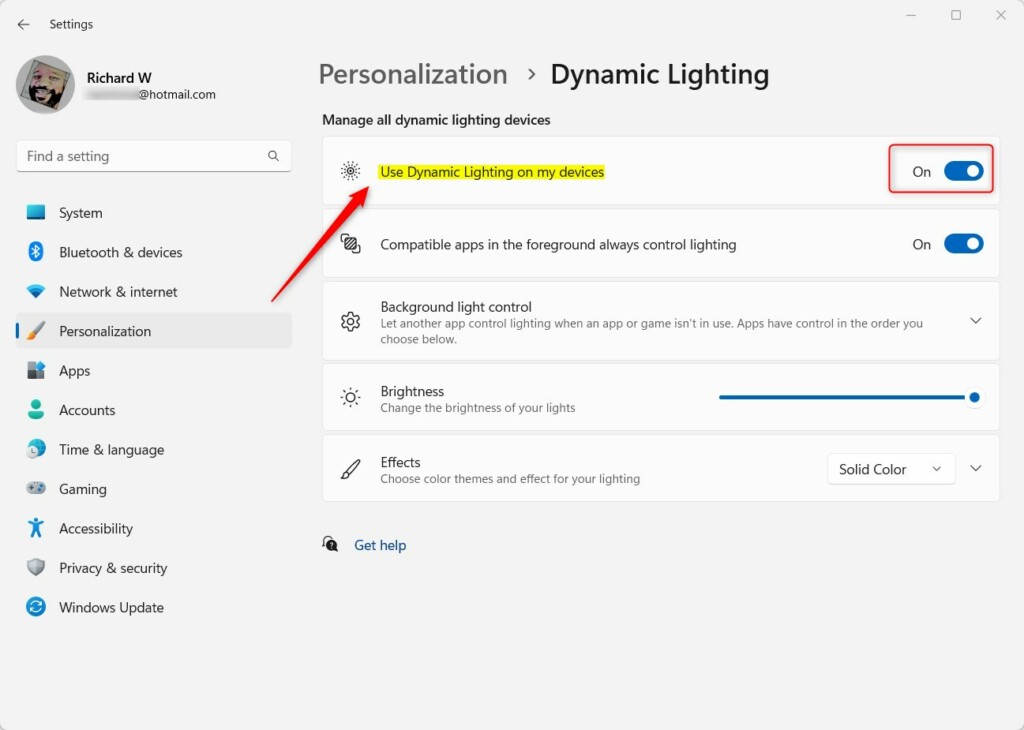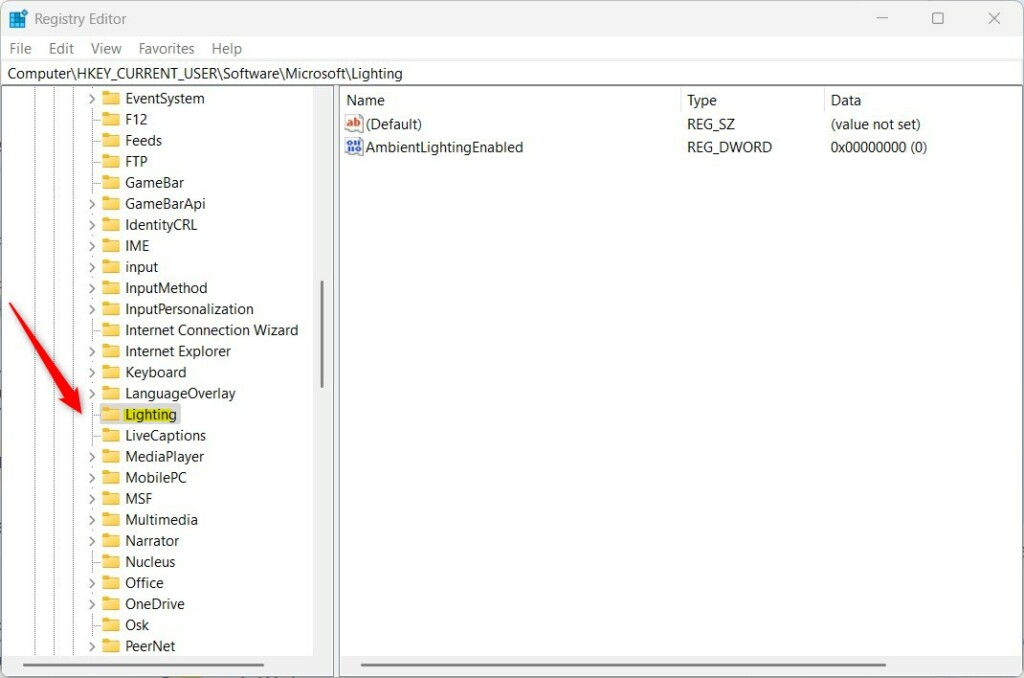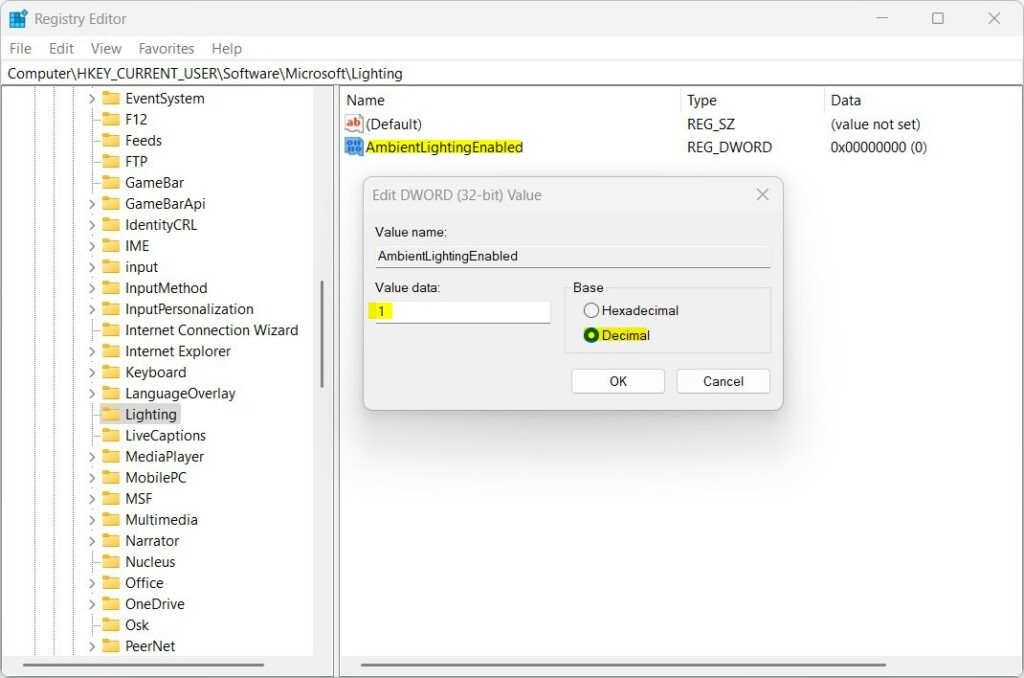This article explains enabling or disabling “Dynamic Lighting” to control RGB lighting for computer devices and accessories.
Windows is introducing a new feature called Dynamic Lighting that will allow developers and hardware partners to experiment with new RGB accessories and component integration.
With Dynamic Lighting, Windows users can easily set up and customize their devices with RGB lights directly from Windows Settings without a third-party tool. Devices and accessories that support Dynamic Lighting can use Windows built-in tools to control their settings.
Here’s how to enable or disable it in Windows 11.
Enable or disable Dynamic Lighting
As mentioned above, Microsoft is adding a new feature in Windows called Dynamic Lighting that will allow developers and hardware partners to experiment with new RGB accessories and components without needing additional tools.
Here’s how to enable or disable it.
First, open the Windows Settings app.
You can do that by clicking on the Start menu and selecting Settings. Or press the keyboard shortcut (Windows key + I) to launch the Settings app.
When the Setting app opens, click the Personalization button on the left.

On the right, select the Dynamic Lighting tile to expand it.

On the Personalization -> Dynamic Lighting settings pane, select the “Use Dynamic Lighting on my devices” tile. Then toggle the switch button to the On position to enable.
To disable it, toggle the button back to the Off position.

You can close the Settings app when you are done.
Turn on or off Dynamic Lighting via the Registry Editor
Another way users can turn on or off Dynamic Lighting in Windows 11 is to use the Windows Registry Editor.
First, open the Windows Registry, and navigate to the folder key below.
HKEY_CURRENT_USER\Software\Microsoft\Lighting
If you don’t see the Lighting folder key, right-click on the Microsoft key, then create the subkey (Lighting) folders.

Right-click the Lighting folder key’s right pane and select New -> DWORD (32-bit) Value. Next, type a new key named AmbientLightingEnabled.
Double-click the new key item name (AmbientLightingEnabled) and make sure the Base option is Decimal, and then update the Value data:
- Type 1 to turn on Dynamic Lighting.
- Type 0 to turn off Dynamic Lighting.

Save your changes and restart your computer.
That should do it!
Reference:
Conclusion:
- Enabling and disabling Dynamic Lighting in Windows 11 gives users control over RGB accessories and components directly from Windows Settings.
- Users can easily enable or disable Dynamic Lighting by toggling the “Use Dynamic Lighting on my devices” tile in the Personalization settings pane.
- Another method to turn on or off Dynamic Lighting is via the Windows Registry Editor, where users can update the AmbientLightingEnabled value to 1 for on and 0 for off.
- With this guide, you now know to customize Dynamic Lighting to suit your preferences and enhance your Windows 11 experience.

Leave a Reply